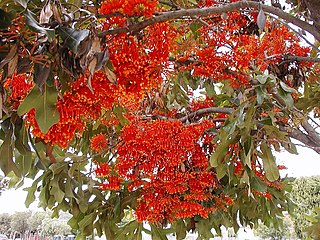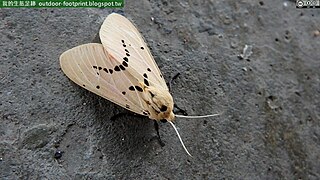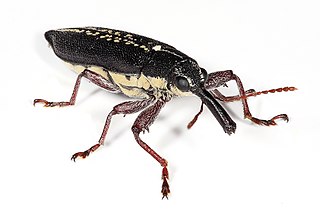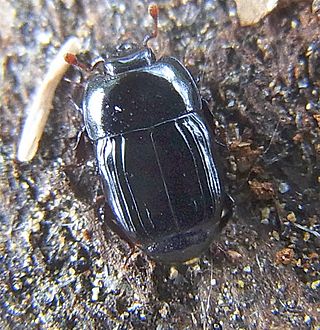Zoology is the scientific study of animals. Its studies include the structure, embryology, classification, habits, and distribution of all animals, both living and extinct, and how they interact with their ecosystems. Zoology is one of the primary branches of biology. The term is derived from Ancient Greek ζῷον, zōion ('animal'), and λόγος, logos.

The Old World flycatchers are a large family, the Muscicapidae, of small passerine birds restricted to the Old World, with the exception of several vagrants and two species, bluethroat and northern wheatear, found also in North America. These are mainly small arboreal insectivores, many of which, as the name implies, take their prey on the wing. The family is relatively large and includes 351 species, which are divided into 54 genera.

Crassostrea is a genus of true oysters containing some of the most important oysters used for food.

Pachychilus, common name the jute snails, is a genus of freshwater snails with an operculum, aquatic gastropod mollusk in the family Pachychilidae.

Begoniaceae is a family of flowering plants with two genera and about 2040 species occurring in the subtropics and tropics of both the New World and Old World. All but one of the species are in the genus Begonia. There have been many recent discoveries of species in the genus Begonia, such as Begonia truncatifolia which is endemic to San Vincente, Palawan. B. truncatifolia is smaller than other species of the genus Begonia and this new species is proposed Critically Endangered by standards set by the IUCN. The only other genus in the family, Hillebrandia, is endemic to the Hawaiian Islands and has a single species. Phylogenetic work supports Hillebrandia as the sister taxon to the rest of the family. The genus Symbegonia was reduced to a section of Begonia in 2003, as molecular phylogenies had shown it to be derived from within that genus. Members of the genus Begonia are well-known and popular houseplants.

Stenocarpus is a genus of about 22 species of flowering plants in the family Proteaceae. They are trees or shrubs with variably-shaped leaves, zygomorphic, bisexual flowers, the floral tube opening on the lower side before separating into four parts, followed by fruit that is usually a narrow oblong or cylindrical follicle.

Satakentia liukiuensis, is a species of palm tree. They are endemic to Ishigaki Island and Iriomote Island in the Yaeyama Islands, the south-westernmost of the Ryukyu Islands, Japan. It is the only species in the genus Satakentia.

Spilarctia is a genus of moths in the family Erebidae. The genus was erected by Arthur Gardiner Butler in 1875.

Arctornis is a genus of tussock moths in the family Erebidae, the namesake of the tribe Arctornithini, and disputedly the sole genus in the tribe. The genus was erected by Ernst Friedrich Germar in 1810.

Rhinotia is a genus of weevils in the family Belidae. There are more than 50 described species in Rhinotia, found in Australia.

The 12th edition of Systema Naturae was the last edition of Systema Naturae to be overseen by its author, Carl Linnaeus. It was published by Laurentius Salvius in Holmia (Stockholm) in three volumes, with parts appearing from 1766 to 1768. It contains many species not covered in the previous edition, the 10th edition which was the starting point for zoological nomenclature.

Laccocenus is a genus in the ground beetle family Carabidae. There are at least two described species in Laccocenus, found in Australia.

Notonomus is a genus of ground beetles in the family Carabidae. There are more than 120 described species in Notonomus, found in Australia.
Eutrechus is a genus in the ground beetle family Carabidae. There are at least four described species in Eutrechus, found in Australia.
Goedetrechus is a genus of carabids in the beetle family Carabidae. There are seven described species in Goedetrechus, found in Tasmania, Australia.
Tasmanorites is a genus of beetles in the family Carabidae, containing the following species:

Barretthydrus is a genus of beetles in the family Dytiscidae, first described in 1927 by Arthur Mills Lea. The type species is Barretthydrus geminatus.

Platysoma is a genus of clown beetles in the family Histeridae. There are more than 80 described species in Platysoma.
Deretaphrus is a genus of dry bark beetles in the family Bothrideridae. A taxonomic revision of the genus published in 2013 listed 25 species, which exhibit a disjunct distribution. There are 22 species of the genus described from Australia, with single species also being found in each of New Caledonia, Bolivia, and North America.
Kyogle is a genus of insects in the family Staphylinidae, first described by Donald S. Chandler in 2001. The genus is found only in Australia, in New South Wales, South Australia, Victoria, Queensland and Tasmania.













